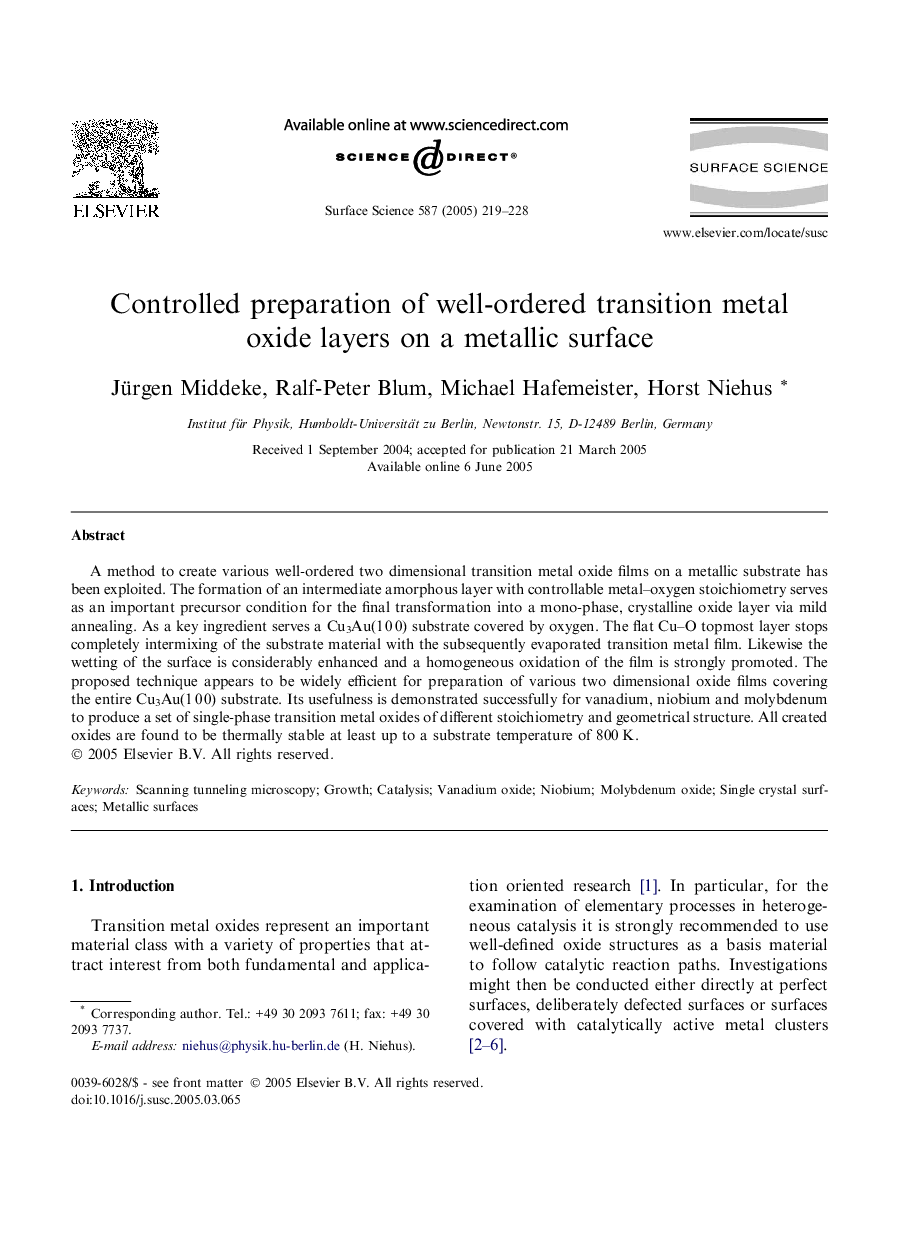| Article ID | Journal | Published Year | Pages | File Type |
|---|---|---|---|---|
| 9594651 | Surface Science | 2005 | 10 Pages |
Abstract
A method to create various well-ordered two dimensional transition metal oxide films on a metallic substrate has been exploited. The formation of an intermediate amorphous layer with controllable metal-oxygen stoichiometry serves as an important precursor condition for the final transformation into a mono-phase, crystalline oxide layer via mild annealing. As a key ingredient serves a Cu3Au(1Â 0Â 0) substrate covered by oxygen. The flat Cu-O topmost layer stops completely intermixing of the substrate material with the subsequently evaporated transition metal film. Likewise the wetting of the surface is considerably enhanced and a homogeneous oxidation of the film is strongly promoted. The proposed technique appears to be widely efficient for preparation of various two dimensional oxide films covering the entire Cu3Au(1Â 0Â 0) substrate. Its usefulness is demonstrated successfully for vanadium, niobium and molybdenum to produce a set of single-phase transition metal oxides of different stoichiometry and geometrical structure. All created oxides are found to be thermally stable at least up to a substrate temperature of 800Â K.
Keywords
Related Topics
Physical Sciences and Engineering
Chemistry
Physical and Theoretical Chemistry
Authors
Jürgen Middeke, Ralf-Peter Blum, Michael Hafemeister, Horst Niehus,
